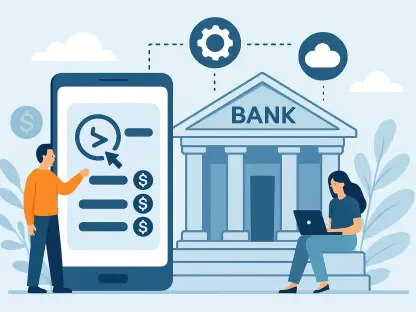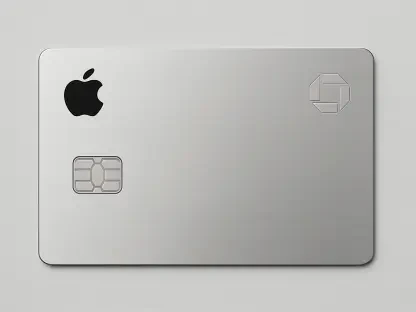The landscape of Business-to-Business (B2B) payments has been subject to significant scrutiny and evolution, driven by technological advancements and the shifting demands of global commerce. The allure of instant payments, often portrayed as the pinnacle of efficiency with forecasts of transaction values potentially increasing by nearly 300% from 2025 to 2030, presents a compelling argument for its adoption. Speed, convenience, and efficiency are undeniably attractive features, especially for business transactions aiming to resonate with modern pace expectations. However, this narrative largely stems from a Business-to-Consumer (B2C) environment where immediacy aligns closely with consumer habits and preferences. In contrast, the intricacies of B2B payments necessitate a distinct approach, given the substantial financial stakes and complex operational considerations involved. As businesses evaluate their payment strategies, understanding the nuances that differentiate B2B from B2C transactions is essential, specifically regarding strategic timing and risk management needs.
Risks and Strategic Timing in B2B Transactions
In the realm of B2B transactions, the magnitude of financial exchanges often involves sums reaching into the millions. Consequently, the stakes are notably higher compared to typical B2C transactions, where payments are usually settled within short time frames or instantly. As projected by industry analysts, the B2B payment market is poised to see substantial growth, potentially escalating to over $213 trillion by 2032. This massive scale underscores the importance of strategic timing in payment processes, which is critical for managing liquidity, maintaining cash flow, and optimizing working capital. Businesses strategically time their payments, a practice crucially different from the rapid settlements seen in consumer transactions, to not disrupt these financial fundamentals. Payment timing is not merely logistical but a carefully orchestrated element of financial strategy aimed at sustaining operations and preserving the firm’s economic health.
While instantaneous payments offer remarkable speed, they also introduce significant risks, particularly in terms of security and fraud. Rapid transactions leave little room for verifying the authenticity or accuracy of payments, creating ample opportunities for errors and fraudulent activities. A concerning trend highlighted by financial security assessments indicates that instant payments can experience alarmingly high fraud rates, sometimes ten times higher than traditional payment methods. Such a vulnerability is exacerbated by the irrevocability of instant payments, where the absence of a buffer for verification increases exposure to fraud and human errors. In a business setting, a simple error in entering payment data could lead to critical cash misallocations. Therefore, while speed is beneficial, it should not compromise the security and accuracy valued by businesses in financial dealings.
The Call for Prompt Payments over Instant Solutions
For B2B businesses, the proposition of instantaneously processing large sums upon invoice receipt does not align well with prudent risk management practices. Payments in the business sector encompass more than mere money exchanges; they are enveloped in rigorous procurement protocols intended to ensure transactional accuracy and security. This friction, often viewed negatively in rapid consumer payments, serves as a necessary safeguard in B2B settings, allowing time for due diligence before finalizing any transactions. Addressing the critical issue of late payments, which reportedly led to the annual closure of thousands of businesses, is essential, yet it must not be pursued at the cost of transactional control and certainty.
The concept of prompt payments emerges as a more aligned solution, filling the gap between swift settlements and the meticulous nature required in B2B transactions. Prompt payments offer a viable alternative, combining timeliness with necessary risk assessments, vital for preserving and fostering robust supplier relationships. By allowing a margin for essential checks, prompt payments help safeguard against fraudulent activities and inadvertent errors while ensuring suppliers receive payments reliably and predictably. This approach encourages businesses to maintain strong, trust-based relationships while upholding their operational commitments without the undue pressure of racing against transaction times.
Technological Solutions: Virtual Cards and Automation
Given the exhaustive demands of B2B transactions, leveraging technological innovations such as virtual cards presents an effective strategy for overcoming inherent payment challenges. Virtual cards provide a flexible yet controlled payment mechanism, aligning the need for secure, prompt transactions with technological advancements in digital finance. Although not novel, virtual cards are experiencing a resurgence, with forecasts indicating their value could rise by over 235% in ensuing years. These cards serve as specialized digital credit solutions, offering enhanced control by allowing businesses to pre-define spending limits, set expiration dates, and apply vendor-specific restrictions.
The automation potential of virtual cards streamlines payment operations, automating record-keeping and integrating real-time transaction data into a business’s financial systems. This not only reduces the administrative burden on accounting teams but also minimizes opportunities for errors and fraud by encrypting transaction data securely. By mitigating security risks, virtual cards significantly decrease the likelihood of unauthorized activities, providing robust protection across the payment process, thus positioning themselves as a preferable alternative to instant payment methods in the B2B sphere.
Furthermore, innovative solutions like Commercial Variable Recurring Payments (cVRPs) signify the advancement toward safer and more strategic payment processing. This technology allows businesses to automate recurring payments with precision, further reducing potential human errors while maintaining control over financial transactions. In essence, these advancements underscore the pivotal role of sophisticated technology in ensuring secure, efficient, and prompt payments in the business sector, marking a substantial shift toward automated and streamlined financial operations.
Future Considerations: Balancing Speed and Security
The Business-to-Business (B2B) payments landscape has undergone significant changes, influenced by technological innovations and the evolving demands of global trade. The concept of instant payments is often seen as the epitome of efficiency, with predictions suggesting that transaction values could rise by nearly 300% between 2025 and 2030. This makes a strong case for its adoption. Speed, convenience, and efficiency are undeniably appealing attributes for businesses seeking to keep up with the fast pace of the modern world. However, this perspective is largely drawn from Business-to-Consumer (B2C) settings, where quick transactions align with consumer expectations and habits. In contrast, B2B payments are more complex, requiring a unique approach due to significant financial investments and intricate operational aspects. Companies must carefully assess their payment strategies, recognizing the differences between B2B and B2C transactions, particularly in terms of strategic timing and managing risks. Understanding these distinctions is crucial for effective decision-making.









